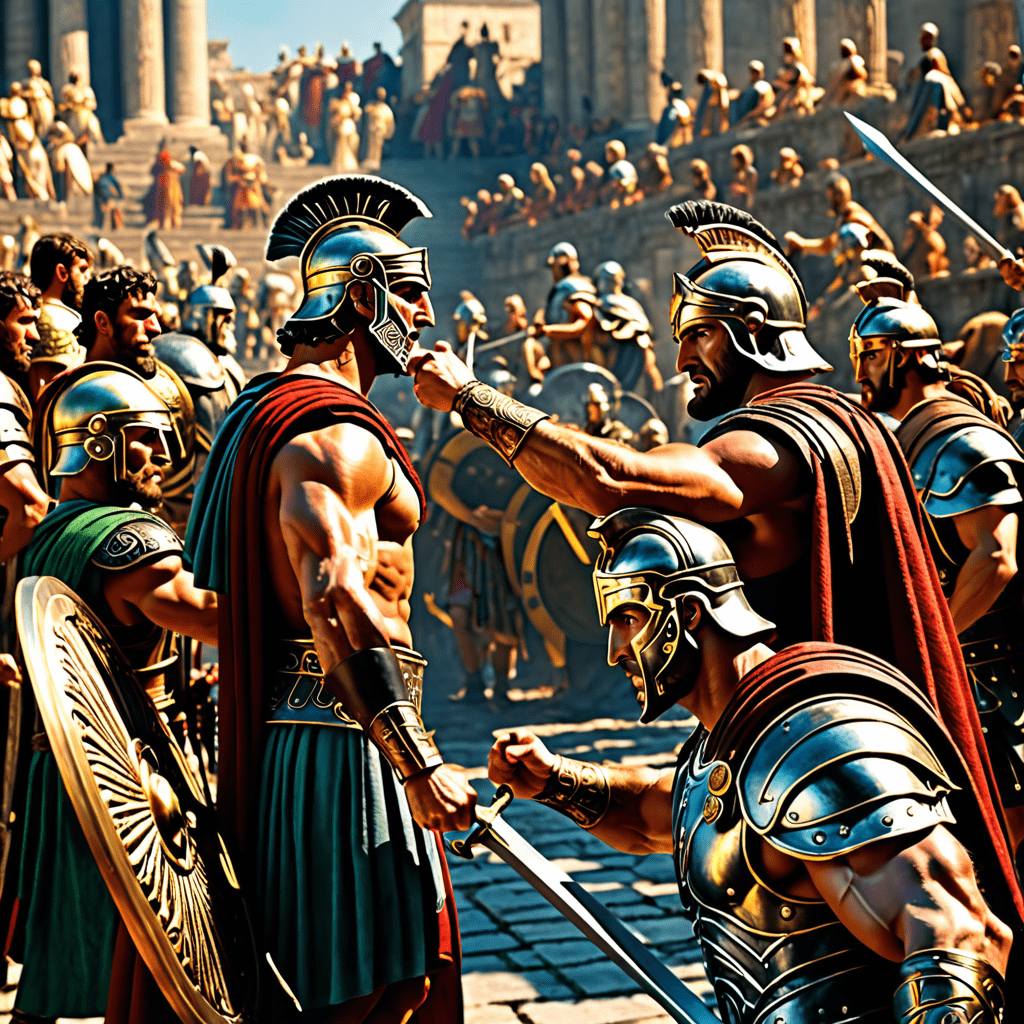End of Days: The Most Compelling Myths of the Apocalypse
I. Introduction to Apocalyptic Myths
The term “apocalypse” originates from the Greek word “apokalupsis,” meaning “revelation.” Throughout history, apocalyptic narratives have held significant weight in various cultures, often reflecting societal fears and existential anxieties about the future. These myths frequently portray dramatic endings, whether through divine intervention, cosmic events, or societal collapse, serving as cautionary tales and moral lessons.
Common themes in apocalyptic narratives include the struggle between good and evil, the concept of a final judgment, and the hope for renewal or rebirth after destruction. This article aims to explore compelling myths surrounding the apocalypse, their historical context, and their implications on human thought and society.
II. Historical Context of Apocalyptic Beliefs
Apocalyptic beliefs have ancient roots, with various civilizations crafting their own end-of-days prophecies. Some notable examples include:
- Mesopotamia: The Enuma Elish describes a chaotic battle among gods that leads to the creation and potential destruction of the world.
- Maya Civilization: Mayan calendars predicted cycles of creation and destruction, with the infamous 2012 date sparking widespread speculation about an impending apocalypse.
Religious texts have also contributed to apocalyptic visions. For instance, the Bible’s Book of Revelation presents a vivid portrayal of the end times, while the Quran includes narratives of judgment day. Historical events, such as wars, plagues, and natural disasters, have further influenced apocalyptic thinking, leading societies to interpret these crises as signs of an impending end.
III. The Role of Religion in Shaping Apocalypse Myths
Religion plays a pivotal role in shaping and perpetuating apocalyptic myths. In Christianity, the Book of Revelation describes a final confrontation between good and evil, culminating in the establishment of a new heaven and earth. Interpretations of this text vary widely, leading to differing beliefs about the timing and nature of the apocalypse.
Hinduism presents a cyclical view of time, where the universe undergoes endless cycles of creation and destruction. The Kali Yuga represents the current age of darkness and moral decline, suggesting an eventual renewal through divine intervention.
Other religions also offer unique perspectives on the end of the world, including:
- Buddhism: The concept of impermanence suggests that all things, including the cycle of life and death, are transient.
- Islam: The Day of Judgment is a significant event where individuals are held accountable for their actions.
IV. Folklore and Cultural Myths of the Apocalypse
Cultural myths and folklore also encapsulate apocalyptic themes. Native American prophecies often speak of a time when the Earth will be cleansed and renewed, emphasizing harmony with nature.
Norse mythology introduces the concept of Ragnarok, a series of events including a great battle that leads to the death of gods and the rebirth of the world. This myth highlights themes of destruction followed by regeneration.
In modern times, folklore and urban legends have emerged, depicting various forms of impending doom, such as:
- The Y2K Scare: Fears surrounding the year 2000 led to widespread panic about technological collapse.
- Zombie Apocalypses: Popular media has increasingly portrayed scenarios involving the undead as a metaphor for societal fears.
V. Scientific Perspectives on Apocalypse Scenarios
In contrast to myths, scientific perspectives offer a grounded view on potential apocalyptic scenarios. Natural disasters pose significant risks, including:
- Climate Change: Rising temperatures and extreme weather can lead to catastrophic consequences for life on Earth.
- Asteroid Impacts: Historical evidence suggests that asteroid collisions have led to mass extinctions, prompting ongoing discussions about planetary defense.
- Pandemics: As seen with COVID-19, global health crises can disrupt societies and economies, leading to apocalyptic fears.
Technological risks also warrant attention. Concerns about artificial intelligence, nuclear warfare, and biotechnology highlight the potential for human-created apocalyptic scenarios, blurring the lines between myth and reality.
VI. The Psychological Impact of Apocalyptic Myths
Apocalyptic myths evoke fear and anxiety, often influencing individual and collective behavior. The concept of collective consciousness suggests that widespread beliefs about the end of days can shape societal responses to crises.
People cope with apocalyptic fears through various mechanisms, including:
- Denial: Some individuals may dismiss apocalyptic narratives as mere fiction.
- Preparation: Others engage in survivalist practices, stockpiling supplies or seeking refuge in remote areas.
- Community Engagement: Joining groups that share similar beliefs can offer a sense of belonging and support.
VII. Apocalyptic Myths in Popular Culture
Popular culture has perpetuated apocalyptic myths through various mediums. Literature, both classic and contemporary, often explores the end of the world, with notable works including:
- The Road by Cormac McCarthy: A harrowing tale of survival in a post-apocalyptic landscape.
- Station Eleven by Emily St. John Mandel: A narrative that examines life after a pandemic.
Film and television have also become fertile grounds for apocalyptic storytelling. Iconic representations include:
- Mad Max: A franchise depicting a dystopian future ravaged by resource wars.
- The Walking Dead: A series centered around survival in a zombie-infested world.
Video games like Fallout and The Last of Us allow players to engage with apocalyptic themes interactively, enhancing their immersion in these narratives.
VIII. The Resurgence of Apocalyptic Beliefs in Modern Society
In recent years, there has been a renewed interest in apocalyptic narratives, fueled by various factors. Some contributing elements include:
- Global Crises: Events such as climate change, political instability, and pandemics have reignited fears of the end times.
- Social Media: The internet facilitates the rapid spread of apocalyptic ideas, often amplifying sensational narratives.
- Contemporary Movements: Groups like the “Preppers” embody a modern survivalist philosophy, preparing for potential doomsday scenarios.
IX. Debunking Common Misconceptions About the Apocalypse
Despite widespread beliefs about impending doom, it is essential to separate fact from fiction. Scientific perspectives provide clarity on potential apocalyptic scenarios, often debunking myths that lack empirical support. Understanding the difference between myth and reality can help mitigate unnecessary fear and encourage proactive engagement with global issues.
In conclusion, apocalyptic myths continue to captivate human imagination across cultures and time periods. Their enduring nature reveals deep-seated fears and hopes about the future, reflecting our ongoing quest for meaning in an uncertain world.



